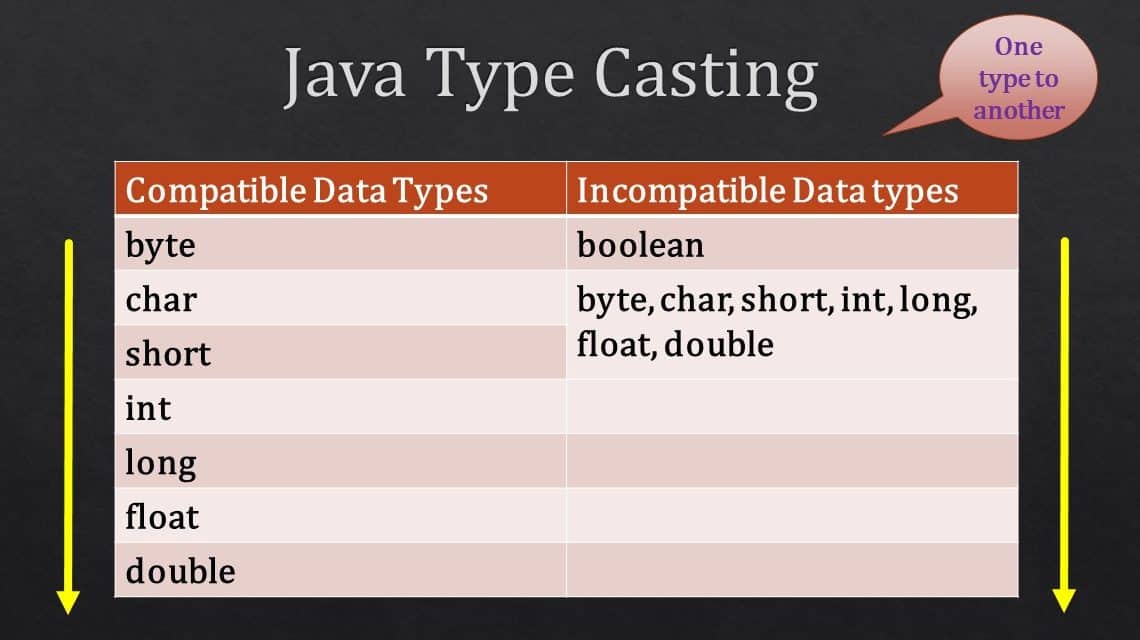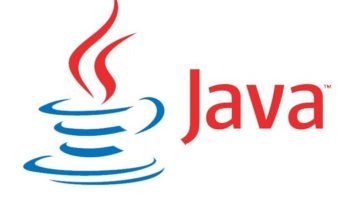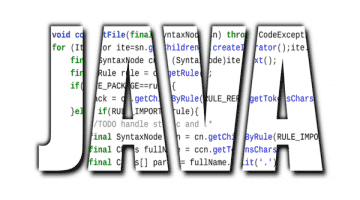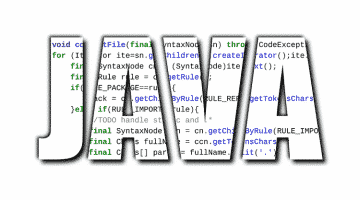Java is a programming language with which we can carry out any type of program. Today it is a common language, and it is becoming more and more important both in the field of the Internet and in computing in general. It is developed by the Sun Microsystems company with great dedication and always focused on meeting the most advanced technological needs.
Types of casting in Java
Casting is a procedure to transform a primitive variable from one type to another or transform an object from one class to another class as long as there is an inheritance relationship between the two (this last Casting is the most important and will be seen later).
Within the Casting of primitive variables, two classes are distinguished:
Implicit: No need to write code to do it. This occurs when performing a widening casting that is when a small value is placed in a large container.
Explicit Casting
Yes, it is essential to write code. This occurs when a narrowing casting is performed, that is when the significant value is placed in a small container. They are susceptible to data loss.
Java Type Casting
In Java language, there are two mainly types of Casting:
Widening Casting (automatically) – converting a smaller type to a larger type size
byte -> short -> char -> int -> long -> float -> double
Narrowing Casting (manually) – converting a larger type to a smaller size type
Double -> float -> long -> int -> char -> short -> byte
Widening or Automatic or implicit type casting
Automatic/Implicit Type casting takes place when,
- the two types are compatible
- the target type is larger than the source type
This type of Casting takes place when two data types are automatically converted.
Advantages of using Java Type Casting
Below are few advantages of Java Type Casting:
Simple language
Java castings are easy to use. One of the most important things you want to know about Java is that it is not complex at all. In fact, the language learning curve is short, so you can immediately familiarize yourself with the terms and functions that the language uses.
The same happens with people who already know other programming languages such as C or C ++. Well, the reality is that these languages are very similar. They are not the same, but if you already have the logic, which is one of the most important things, then it will not cost you any work to start working with Java and above all take advantage of it, which is one of the things that is sought, be productive and worth the time invested.
Object-Oriented Language
If you don’t be familiar with much about programming, then you may be wondering how to objects. Well, the objects are in charge of encapsulating information, classes, and functions, which can be manipulated later or can be added to different programs, and there is what the manipulation of data between objects is; for this reason, these types of languages are much more powerful.
Not for nothing, Java is one of the languages most used in large projects, which at first glance can seem incredibly complicated.
Distributed Applications
Surely you have heard of distributed computing, what it is, and the advantages of it because it is told you, with Java, you have the possibility of making distributed applications. What these network applications do is run on a platform that is made up of a distributed computing base and works perfectly. It maintains a lot of stability and the performance increases considerably, well; it is just a detail in case you did not know.
Interpreted and Compiled
One of the main advantages of Java is definitely its compilation. What about Java compilation? Well, the collection is so excellent that the assembly language is assimilated; that is, it can be interpreted from the base. This helps a lot in the execution of applications compiled in Java since it can be executed basically anywhere without major problems.
It is safe
One of the virtues of Java possibly is its security, in addition to being an open-source language, but its programs are compiled so correctly and originally, that you will not have any problem with security filters or the like. You will have the comfort that even when making web applications with Java, the security will be maximum, and you will not have to worry.
Most common uses of Java programs
Java is a concurrent object-oriented programming language. Its appearance back in 1995 was a real revolution in the computer programming sector since it allows developers to write their applications once, and they can be run on any computer or device regardless of the operating system they work with.
This evident advantage made Java one of the most popular and used programming languages to date, especially for client-server architecture applications.
The most common uses of the Java programming language are really varied.
Productivity and profits
Java is widely used in all kinds of productivity applications such as word processors or spreadsheets. Even Google Maps sometimes uses a Java applet that runs within the user’s own browsing, reducing the load on the server.
Entertainment
Games constitute the most widespread use of Java since, thanks to their use; these games can be run on different gaming platforms. Just click within its limits and the game will begin to be fully operational for the user.
Education
One of the most prestigious uses of Java is for educational tools such as financial sheets, calculators, charts, time management tools, composition, exercises.
Mobile apps
With Java ME or “Micro Edition,” Java applets, which are already small enough, become much more appropriate for the applications and browsers that we find and use on our mobile devices.
In general, Java is found in many browsers and programs, since any application developed with this language can be embedded in a website and executed in a browser, regardless of the operating system.




